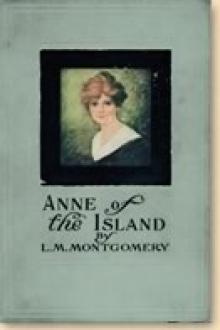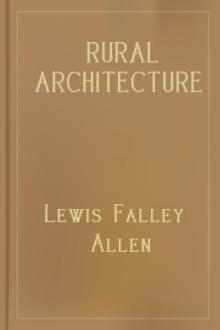A History of Art for Beginners and Students, Clara Erskine Clement Waters [best beach reads .txt] 📗

- Author: Clara Erskine Clement Waters
- Performer: -
Book online «A History of Art for Beginners and Students, Clara Erskine Clement Waters [best beach reads .txt] 📗». Author Clara Erskine Clement Waters
Very few of his portraits remain; they are graceful in pose and fine in color. He knew how to represent the repose and refinement of “gentle blood and delicate nurture.” Many of his works were burned in the Prado. His “Marriage of St. Catherine” is in the Gallery of Madrid. A “St. Sebastian” painted for the Church of St. Jerome, at Madrid, is considered his masterpiece. Lope de Vega wrote Coello’s epitaph, and called his pictures
“Eternal scenes of history divine,
Wherein for aye his memory shall shine.”
Juan Fernandez Navarrete (1526-1579), called El Mudo, because deaf and dumb, is a very interesting painter. He was not born a mute, but became deaf at three years of age, and could not learn to speak. He studied some years in Italy, and was in the school of Titian. In 1568 he was appointed painter to Philip II. His principal works were eight pictures for the Escorial, three of which were burned. His picture of the “Nativity” is celebrated for its lights, of which there are three; one is from the Divine Babe, a second from the glory above, and a third from a torch in the hand of St. Joseph. The group of shepherds is the best part of the picture, and when Tibaldi saw the picture he exclaimed, “O! gli belli pastori!” and it has since been known as the “Beautiful Shepherds.”
His picture of “Abraham and the Three Angels” was placed near the door where the monks of the Escorial received strangers. The pictures of Navarrete are rare. After his death Lope de Vega wrote a lament for him, in which he said,
“No countenance he painted that was dumb.”
When the “Last Supper” painted by Titian reached the Escorial, it was found to be too large for the space it was to occupy in the refectory. The king ordered it to be cut, which so distressed El Mudo that he offered to copy it in six months, in reduced size, and to forfeit his head if he did not fulfil his promise. He also added that he should hope to be knighted if he copied in six months what Titian had taken seven years to paint. But Philip was resolute, and the picture was cut, to the intense grief of the dumb Navarrete. While the painter lived Philip did not fully appreciate him; but after his death the king often declared that his Italian artists could not equal his mute Spaniard.
Juan Carreño de Miranda (1614-1685) is commonly called Carreño. He was of an ancient noble family. His earliest works were for the churches and convents of Madrid, and he acquired so good a name that before the death of Philip IV. he was appointed one of his court-painters. In 1671 the young king Charles gave Carreño the cross of Santiago, and to his office of court-painter added that of Deputy Aposentador. He would allow no other artist to paint his likeness unless Carreño consented to it. The pictures of Carreño were most excellent, and his character was such as to merit all his good fortune. His death was sincerely mourned by all who knew him.
It is said that on one occasion he was in a house where a copy of Titian’s “St. Margaret” hung upon the wall, and those present united in saying that it was abominably done. Carreño said: “It has at least one merit; it shows that no one need despair of improving in art, for I painted it myself when I was a beginner.”
Gregorio Utande, a poor artist, had painted a “Martyrdom of St. Andrew” for the nuns of Alcalà, and demanded one hundred ducats for it. The nuns thought the price too much, and wished to have Carreño value the work. Utande took the picture to Carreño, and first presenting the great master with a jar of honey, asked him to touch up his St. Andrew for him. Carreño consented, and, in fact, almost repainted Utande’s picture. A short time after Carreño was asked to value the St. Andrew, but declined. Then Herrera valued it at two hundred ducats, which price the nuns paid. After Utande received his money he told the whole story, and the picture was then known as “La Cantarilla de Miel,” or “the pot of honey.”
Claudio Coello (1635-1693), who, as we have said, has been called the last of the old Spanish masters, was intended by his father for his own profession, that of bronze-casting. But Claudio persuaded his father to allow him to study painting, and before the close of his life he became the most famous painter in Madrid. He was not only the court-painter, but also the painter to the Cathedral of Toledo and keeper of the royal galleries. It was not strange that he should feel that he merited the honor of painting the walls of the Escorial, and when this was refused him and Luca Giordano was selected for the work, Coello threw aside his brushes and paints, grew sad, then ill, and died a year later. His masterpiece is now in the Escorial; it represents the “Collocation of the Host.” His own portrait painted by himself is in the gallery of the Hermitage at St. Petersburg.
The school of Seville was the most important school of Spain. It is also known as the school of Andalusia. It dates from the middle of the fifteenth century, and its latest master, Alonso Miguel de Tobar, died in 1758.
Luis de Vargas (1502-1568), one of the earliest of the painters of the school of Seville, was a devout and holy man. He was accustomed to do penance, and in his room after his death scourges were found with which he had beaten himself, and a coffin in which he had been accustomed to lie and meditate upon death and a future life. It is said that Vargas studied twenty-eight years in Italy. His pictures were fine. His female heads were graceful and pure, his color good, and the whole effect that of grand simplicity. His picture of the “Temporal Generation of Our Lord” is his best work in Seville. Adam is kneeling in the foreground, and his leg is so well painted that the picture has been called “La Gamba.” In spite of his seriousness Vargas was a witty man. On one occasion he was asked to give his opinion of a very poor picture of “Christ on the Cross.” Vargas replied: “He looks as if he were saying, ‘Forgive them, Lord, for they know not what they do!’”
Pablo de Cespedes (1538-1608) was born at Cordova, and is an important person in the history of his time, for he was a divine, a poet, and a scholar, as well as an architect, sculptor, and painter. He was a graduate of the University of Alcalà, and excelled in Oriental languages. He studied art in Rome, and while there made a head of Seneca in marble, and fitted it to an antique trunk; on account of this work he was called “Victor il Spagnuolo.” Zuccaro was asked to paint a picture for the splendid Cathedral of Cordova; he declined, and said that while Cespedes was in Spain they had no need of Italian artists. The pictures of Cespedes which now remain are so faded and injured that a good judgment can scarcely be formed of them; but they do not seem to be as fine as they were thought to be in his day. His “Last Supper” is in the Cathedral of Cordova. In the foreground there are some jars and vases so well painted that visitors praised them. Cespedes was so mortified at this that he commanded his servant to rub them out, and only the most judicious admiration for the rest of the picture and earnest entreaty for the preservation of the jars saved them from destruction. He left many writings upon artistic subjects and an essay upon the antiquity of the Cathedral of Cordova. He was as modest as he was learned, and was much beloved. He was made a canon in the Cathedral of Cordova, and was received with “full approbation of the Cordovese bishop and chapter.”
Francisco Pacheco (1571-1654) was born at Seville. He was a writer on art, and is more famous as the master of Velasquez and on account of his books than for his pictures. He established a school where younger men than himself could have a thorough art education. Pacheco was the first in Spain to properly gild and paint statues and bas-reliefs. Some specimens of his work in this specialty still exist in Seville.
Francisco de Herrera, the elder (1576-1656), was a very original painter. He was born at Seville, and never studied out of Andalusia. He had so bad a temper that he drove his children and his pupils away from him. He knew how to engrave on bronze, and made false coins; when his forgery was discovered, he took refuge with the Jesuits. While in their convent Herrera painted the history of St. Hermengild, one of the patron saints of Seville. When Philip IV. saw his picture he forgave him his crime, and set him at liberty.
Francisco Zurbaran (1598-1662) was one of the first among Spanish painters. He was skilful in the use of colors, and knew how to use sober tints and give them a brilliant effect. He did not often paint the Madonna. His female saints are like portraits of the ladies of his day. He was very successful in painting animals, and his pictures of drapery and still-life were exact in their representation of the objects he used for models. He painted historical and religious pictures, portraits and animals; but his best pictures were of monks. Stirling says: “He studied the Spanish friar, and painted him with as high a relish as Titian painted the Venetian noble, and Vandyck the gentleman of England.”
Zurbaran was appointed painter to Philip IV. before he was thirty-five years old. He was a great favorite with Philip, who once called Zurbaran “the painter of the king, and king of painters.” Zurbaran’s finest works are in the Museum of Seville. He left many pictures, and the Louvre claims to have ninety-two of them in its gallery.
Diego Rodriguez de Silva y Velasquez (1599-1660) was born at Seville, and died at Madrid. His parents were of noble families; his father was Juan Rodriguez de Silva, and his mother Geronima Velasquez, by whose name, according to the custom of Andalusia, he was called. His paternal grandfather was a Portuguese, but so poor that he was compelled to leave his own country, and seek his fortune at Seville, and to this circumstance Spain owes her greatest painter. Velasquez’s father became a lawyer, and lived in comfort, and his mother devoted herself to his education. The child’s great love of drawing induced his father to place young Velasquez in the school of Herrera, where the pupil acquired something of his free, bold style. But Velasquez soon became weary, and entered the school of Francisco Pacheco, an inferior painter, but a learned and polished gentleman. Here Velasquez soon learned that untiring





Comments (0)